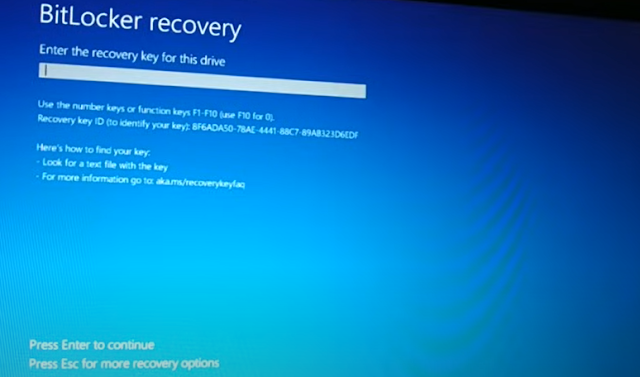Forgot bit locker pin, forgot bit locker recovery key, 5 Easy ways to fix


### Python PIP: An Overview
**PIP**
stands for **"Pip Installs Packages"** and is Python’s package
manager. It allows you to install, update, and manage third-party libraries and
packages in Python. Many Python libraries and frameworks are available via PIP,
which makes it easy to extend Python’s capabilities by installing external
packages.
### Common
Uses of PIP
1.
**Installing Packages**: Install any package from the Python Package Index
(PyPI) or other repositories.
2.
**Uninstalling Packages**: Remove installed packages when no longer needed.
3.
**Upgrading Packages**: Update packages to their latest versions.
4. **Listing
Installed Packages**: View packages currently installed in your environment.
5.
**Checking for Outdated Packages**: Identify packages that need upgrading.
### How to
Use PIP
#### 1.
**Installing a Package**
The basic
syntax for installing a package is:
```bash
pip install
package_name
```
Example:
```bash
pip install
requests
```
This command
installs the **`requests`** library, which is commonly used for making HTTP
requests.
#### 2.
**Uninstalling a Package**
To uninstall
a package, use:
```bash
pip
uninstall package_name
```
Example:
```bash
pip
uninstall requests
```
This will
remove the **`requests`** library from your environment.
#### 3.
**Upgrading a Package**
To upgrade a
package to the latest version:
```bash
pip install
--upgrade package_name
```
Example:
```bash
pip install
--upgrade requests
```
This will
upgrade the **`requests`** library to the most recent version.
#### 4.
**Listing Installed Packages**
You can view
all installed packages in your environment with:
```bash
pip list
```
This command
will display the package name and version number of all installed packages.
#### 5.
**Checking for Outdated Packages**
To see if
any installed packages are outdated:
```bash
pip list
--outdated
```
This command
will show the packages that have newer versions available, along with the
current version and the latest version.
#### 6.
**Installing Specific Versions of Packages**
If you need
to install a specific version of a package:
```bash
pip install
package_name==version_number
```
Example:
```bash
pip install
numpy==1.21.0
```
This command
installs version **1.21.0** of the **`numpy`** package.
#### 7.
**Installing from a Requirements File**
Many
projects provide a `requirements.txt` file that lists all the dependencies
needed. You can install all packages listed in the file with:
```bash
pip install
-r requirements.txt
```
#### 8.
**Generating a Requirements File**
You can
create a `requirements.txt` file with all the packages and their versions that
are currently installed in your environment:
```bash
pip freeze
> requirements.txt
```
This command
outputs a list of installed packages and their versions to a file, which is
useful for sharing or recreating the same environment.
### How to
Install PIP
PIP usually
comes pre-installed with modern versions of Python (from Python 3.4 and later).
You can check if PIP is installed by running:
```bash
pip
--version
```
If PIP is
not installed, you can install it by:
1. **Using
the official installer:**
- Download **`get-pip.py`** from
[here](https://bootstrap.pypa.io/get-pip.py).
- Run the installer using:
```bash
python get-pip.py
```
2. **Using a
Package Manager (Linux/macOS)**:
- For Ubuntu/Debian, you can install PIP
with:
```bash
sudo apt-get install python3-pip
```
- For macOS, you can use **Homebrew**:
```bash
brew
install python
```
### Virtual
Environments and PIP
It’s a good
practice to use **virtual environments** to keep your dependencies isolated for
different projects. You can create a virtual environment using **`venv`** or
**`virtualenv`**, and use PIP to manage packages within that environment.
1. **Create
a virtual environment**:
```bash
python -m venv myenv
```
2.
**Activate the virtual environment**:
- On Windows:
```bash
myenv\Scripts\activate
```
- On macOS/Linux:
```bash
source myenv/bin/activate
```
3. **Use PIP
in the virtual environment** to install packages, which will be isolated from
your global environment.
4.
**Deactivate the virtual environment**:
```bash
deactivate
```
### PIP
Commands Summary
Here’s a
quick list of useful PIP commands:
- **Install
a package**: `pip install package_name`
-
**Uninstall a package**: `pip uninstall package_name`
- **Upgrade
a package**: `pip install --upgrade package_name`
- **List
installed packages**: `pip list`
- **Check
for outdated packages**: `pip list --outdated`
- **Install
from `requirements.txt`**: `pip install -r requirements.txt`
- **Generate
`requirements.txt`**: `pip freeze > requirements.txt`